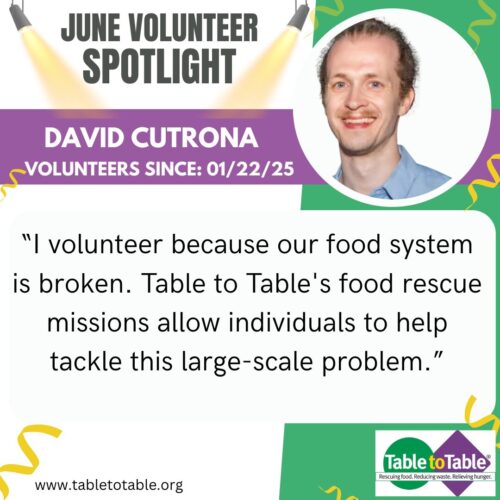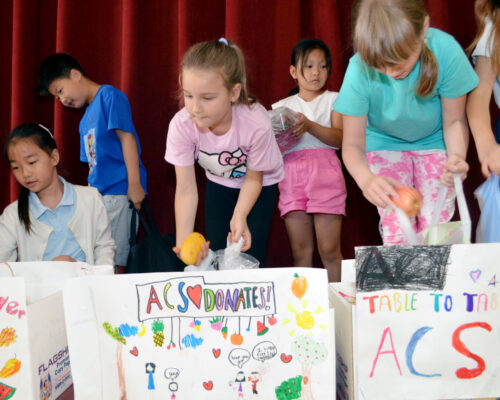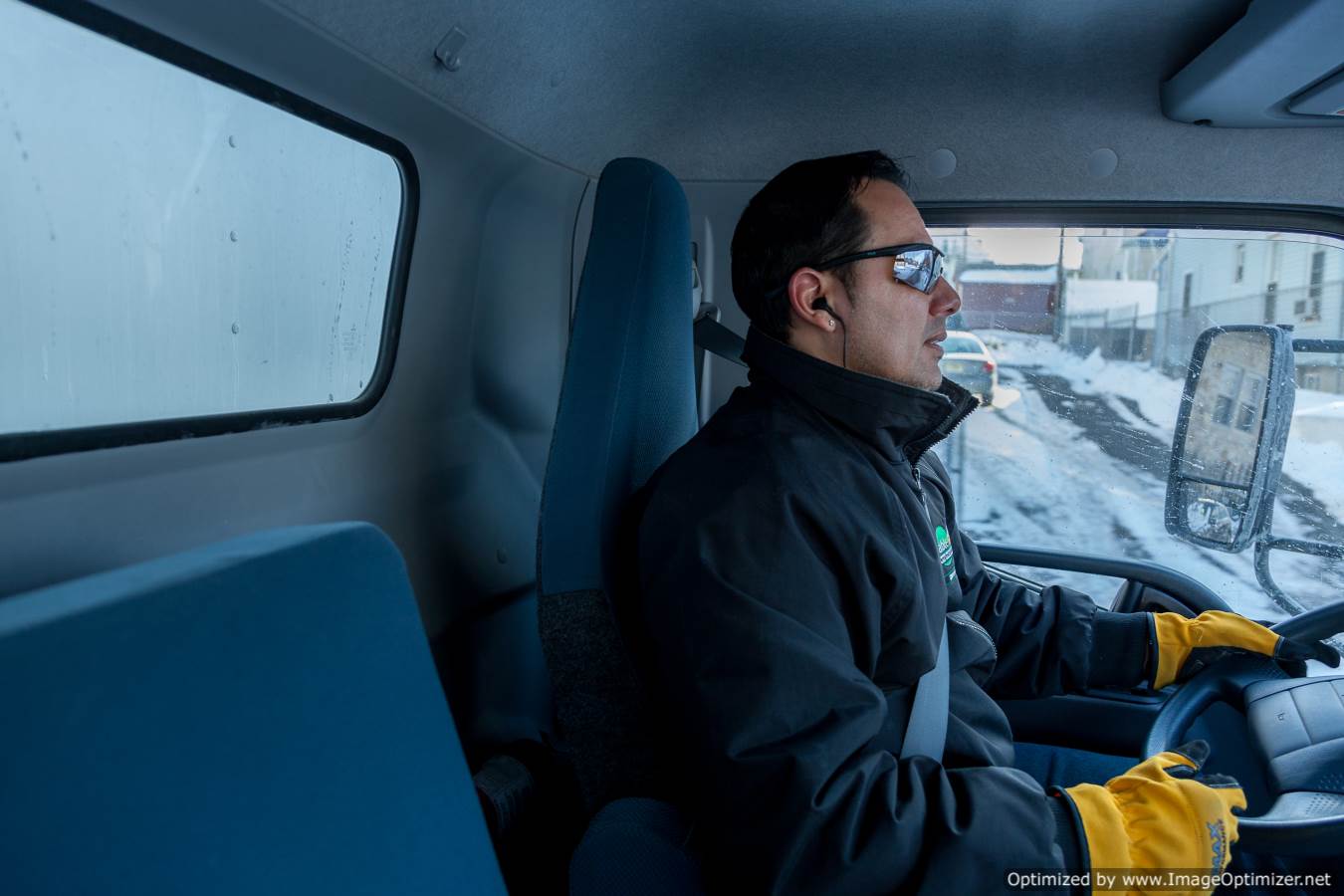
Blog
A Day of Food Rescue with Table to Table
By: Kimberly Bustamante
It’s 7:30 a.m. Wednesday and rush hour is in full force. We are smack in the middle of the chaos of bumper-to-bumper traffic as it winds its way along spaghetti strings of highways leading to the George Washington Bridge. We are in Fort Lee, NJ – a 3 square mile city that wraps around the New Jersey side of the bridge. The views of the NYC skyline are amazing, especially as the sun was rising.
With a population density of almost 14,000 people per square mile, Fort Lee is one of the densest places in the State. We are on our way to a Supermarket – one of the many businesses who donate perishable food to Table to Table.
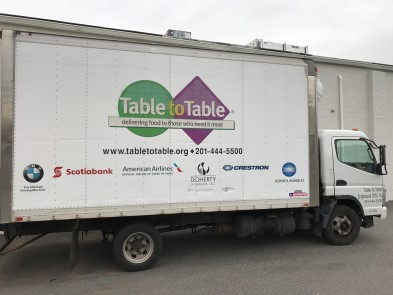
Table to Table is a community-based food rescue program that collects perishable food from supermarkets, chain restaurants and food distributors, and then redistributes it the same day to over 100 non-profit organizations such as: food pantries, homeless shelters, agencies for victims of domestic violence, senior adult centers, soup kitchens, substance abuse and rehabilitation programs, medical day care facilities, and churches. The program currently operates in Bergen, Essex, Passaic and Hudson counties.
I was riding one of the Wednesday trucks with Carlos. Table to Table has a fleet of 6 refrigerated trucks which pick up and drop off perishable food six days a week. During my time with Carlos I learned a lot about the program. Up to 40% of food in the US goes uneaten and typically ends up thrown away. Much of that food is still good to consume. For example, supermarkets and food distributors pull food for a variety of reasons. Incorrect anticipation of consumer choices and demand may lead to overbuying. Manufacturing and distribution issues can result in food being unused and unconsumed. Even weather conditions can have an effect. All of these factors contribute to good, quality food being thrown away. It’s heartbreaking to see large dumpsters being filled with nutritious food that’s been pulled from shelves because, for example, the produce is blemished. Especially if you consider that rescuing just 15% of that edible, nutritious food would feed 25 million Americans each year.
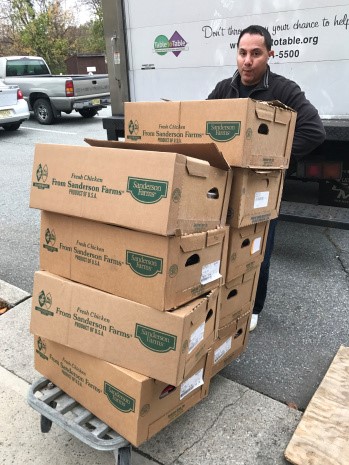
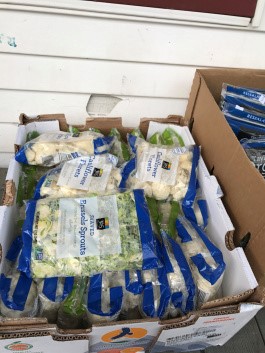
Food pantries play their part but typically focus on boxed and dry goods and have limited capability for collecting and distributing perishable food. That’s where Table to Table comes in. Focusing exclusively on rescuing wholesome, perishable fruits, vegetables, meats, and dairy, they redistribute it the same day to needy people.
During my day with Carlos we ventured to a good dozen cities throughout several counties and I was really intrigued by the diversity of locations for both picking up and dropping off the food. Some were densely populated and traffic-suffocated cities like Fort Lee or poverty-stricken and substance-abuse laden neighborhoods like Passaic.
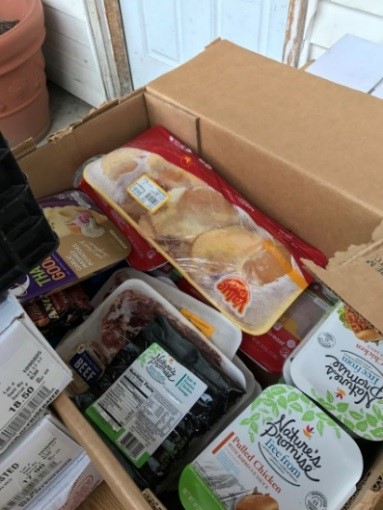
These were juxtaposed against the affluent, quiet, rural beauty of forests and reservoirs in northeastern NJ townships such as Ringwood and Wanaque, where the population density drops from Fort Lee’s 14,000 people per square mile to 1,400 people per square mile. There were pick up and drop off locations in each of these types of areas, reminding me that food insecurity haunts every community. Throughout the State, over 1 million residents is considered food insecure, meaning they lack consistent access to enough food to live healthy lives. More than 1/3 of these are children.
On our Wednesday schedule, most of the drop-off locations were churches who ran food pantries and one women’s shelter. Each driver has a set schedule each day so they get to really know the route, the donors at the pick-up locations and the coordinators at the recipient drop off locations. Everyone was very happy to see us and I was surprised at how generous the food donors were!
As an organization, Table to Table relies solely on fundraising and donations to raise the money needed to run the organization. They partner with a host of large corporations and work hard to gain the support of hundreds of local companies and generous individuals. They choose not to seek any government funding, which allows them the leeway to skip charging fees to the organizations receiving their food. This can be a significant cost savings to those non-profits, who can then reinvest that saved money into other services for their clients.

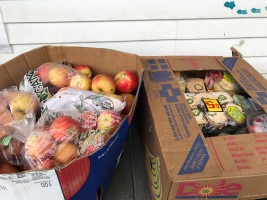
The day was filled with lifting and moving boxes of food onto and off the refrigerated truck while spending time catching up with the donor and recipient representatives. I’m not sure how helpful I was with the manual labor but Carlos was a friendly and gracious guide and answered my never-ending questions. As I think back upon my day, I am touched by both the number and variety of donor organizations and the purpose-driven generosity of the receiving organizations who are focused on helping support the food insecure. It’s wonderful to see such community-based action.
More From News
July 8, 2025
Table to Table: Behind The Seams
July 3, 2025
How Much Food Will Go Uneaten on the Fourth of July?
REAL PEOPLE, REAL STORIES.
June 30, 2025
David Cutrona: Volunteer Spotlight
The United States’ food system is broken. David Cutrona is doing his part to fix it. Our June Volunteer Spotlight is showcasing...
June 24, 2025
Elementary School Students Honored
More students are working to end hunger and reduce food waste. Students at Godwin and Highland Elementary schools in Midland Park were...
June 19, 2025
Leonia Students Donate Hundreds of Pounds of Produce
Every little bit counts. Second-graders at Anna C. Scott Elementary School in Leonia held a fresh produce drive for Table to Table...











